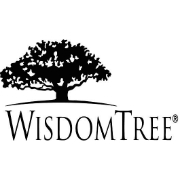After a while I “graduated” to a cash-back credit card, which paid a higher percentage back on grocery and gas spending.I liked the simplicity of funnelling my spending onto one no-fee cash back credit card and getting a little something back for my effort.My attitude changed a few years later when I started doing research into travel rewards credit cards and other premium cards that came with loads of benefits along with an annual fee.What I found was that some credit cards offered better perks in certain spending categories, but not in others. I decided I could maximize my rewards credit card points by using one card for groceries, another one for gas, one for dining and entertainment, and yet another for everything else, including travel.Finding the best rewards credit cardSo I applied for many credit cards over the next three years. The type of cards that found their way into my wallet typically came with big perks; sign-up or welcome bonus points worth hundreds of dollars in cash or travel, annual fees waived in the first year, and the ability to earn more points at partner retailers when you used your card.I guess you could say I got greedy. I was addicted to finding the best rewards credit card and racking up rewards.Most cards wouldn’t last a year in my wallet before I ditched them and moved on to the next round of tempting offers. The rewards cycle went something like this: apply for a credit card, cash in on the bonus offers, cancel the card within 12 months (before the annual fee kicked-in), and Bob’s your uncle.
I eventually realized what a dangerous game I was playing and ultimately came to my senses. Dangerous because I applied for so many credit cards, and had access to so much credit, that my credit score took a major nose-dive (shameful for a personal finance blogger).
Besides, it was a royal pain balancing my budget every month with spending on multiple cards – each one with a different due date. Enough was enough.
This time I’d go back to funnelling all of my spending onto one card. But which one? I thought about the cards that had staying power in my wallet, the ones I held onto for longer than a year.
What did they all have in common? High earning rates in lots of spending categories, not just one or two. Flexibility when it comes to redeeming points, including the ability to book travel with any provider and use your points to cover fees and taxes. Outside of the box incentives help, too, like free checked bags, priority boarding, or a complimentary airport lounge pass for you and a guest.
That may sound like I’m being picky but Canadians are a rewards savvy bunch and many are also looking to get more from the credit cards they carry. According to a recent TD survey, cardholders want and expect greater choice and flexibility for what their reward program offers, as well as new and creative ways to earn and redeem points.
Sound familiar?
The same TD survey said many Canadians own more than one credit card, with nearly nine in ten (89 per cent) owning a least one card for an average of 1.9 credit cards each.
This humble blogger thinks Canadians are leaving money (rewards) on the table by not finding one program that meets their needs and then sticking to it.
Here’s the thing: funnelling all of your spending onto one rewards credit card is the best way to earn points quickly and maximize the rewards potential of that program.
Final thoughts
In today’s competitive travel rewards landscape, it shouldn’t be hard to find a rewards program that let’s you have your cake and eat it too.
But, as the TD survey says, with such a wide variety of rewards programs available, and so many ways to collect and redeem points, make sure you understand how the earning and redemption mechanics of the card work in order to get the maximum benefit from it.
My advice is to dig into your budget and understand where you spend your money (and how much you spend each month). Only then can you determine which credit card rewards program best matches your spending.
 In addition to running the Boomer & Echo website, Robb Engen is a fee-only financial planner. This article originally ran on his site and is republished here with his permission. The post was originally created in partnership with TD. All thoughts and opinions are Mr. Engen’s.
In addition to running the Boomer & Echo website, Robb Engen is a fee-only financial planner. This article originally ran on his site and is republished here with his permission. The post was originally created in partnership with TD. All thoughts and opinions are Mr. Engen’s.
 By Kevin Flanagan, Senior Fixed Income Strategist, WisdomTree
By Kevin Flanagan, Senior Fixed Income Strategist, WisdomTree








